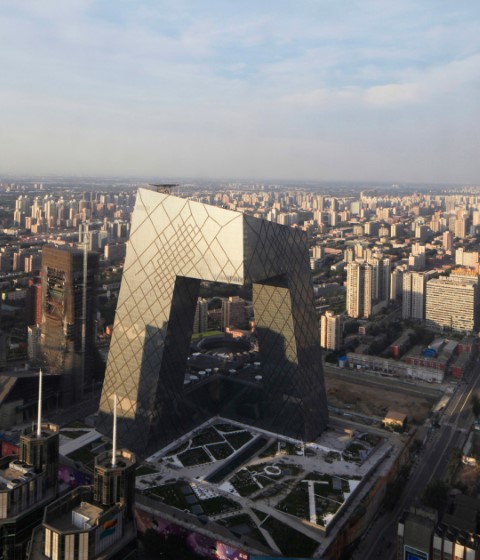When selecting the MGM Cotai, the jury was especially fascinated by its innovative design. The unique structure is based on the idea of nine Chinese jeweler's boxes stacked upon each other, forming two interconnected towers. The asymmetrical design and golden coloring create a dynamic and glamorous appearance, which fits the atmosphere of Macau. "The unusual shape and color scheme of the building immediately catches the eye. The skyscraper does not fall in line with the typical expectations for high-rise architecture in any way", says Daniel Schuldt, Emporis’ managing director.
The second place goes to La Marseillaise in Marseille, designed by French architect Jean Nouvel. It impressed the jury with its ecological construction features and its extraordinary facade which is painted in 30 different colors reflecting the diversity of the city. Moreover, it is fitted with awnings for sun protection, giving the tower a unique appearance that sets it apart from the usual smooth facades that often dominate modern skyscraper architecture. An exceptional component of the building from an ecological point of view is the unconventional air conditioning system. It is connected to a seawater cycle, making it possible to cool the tower almost without additional electricity consumption by using cold water from the sea.
The third place goes to 52 Lime Street, located in the heart of London. What makes the skyscraper special is its clear and narrow geometric shape and the reflective facade, that give the building the look of a sharp knife and earned it the nickname "The Scalpel". In addition to its shape, the skyscraper also impresses with its sustainability. For example, water consumption is 45% lower than in comparable buildings and energy consumption has also been significantly reduced, earning 52 Lime Street an “excellent” rating under the BREEAM sustainability standard.
This year's results show once again that height is not everything when it comes to skyscrapers. Instead, the top three buildings mainly scored points for their innovative design ideas and sustainable construction. Europe also is strongly represented in this year's list, clearly continuing the general trend of Europe catching up with North America and Asia, the current leaders in skyscraper construction.
The second place goes to La Marseillaise in Marseille, designed by French architect Jean Nouvel. It impressed the jury with its ecological construction features and its extraordinary facade which is painted in 30 different colors reflecting the diversity of the city. Moreover, it is fitted with awnings for sun protection, giving the tower a unique appearance that sets it apart from the usual smooth facades that often dominate modern skyscraper architecture. An exceptional component of the building from an ecological point of view is the unconventional air conditioning system. It is connected to a seawater cycle, making it possible to cool the tower almost without additional electricity consumption by using cold water from the sea.
The third place goes to 52 Lime Street, located in the heart of London. What makes the skyscraper special is its clear and narrow geometric shape and the reflective facade, that give the building the look of a sharp knife and earned it the nickname "The Scalpel". In addition to its shape, the skyscraper also impresses with its sustainability. For example, water consumption is 45% lower than in comparable buildings and energy consumption has also been significantly reduced, earning 52 Lime Street an “excellent” rating under the BREEAM sustainability standard.
This year's results show once again that height is not everything when it comes to skyscrapers. Instead, the top three buildings mainly scored points for their innovative design ideas and sustainable construction. Europe also is strongly represented in this year's list, clearly continuing the general trend of Europe catching up with North America and Asia, the current leaders in skyscraper construction.










































